AMS-02 Transition Radiation Detector
Dr. Thorsten Siedenburg, Dr. Thomas Kirn
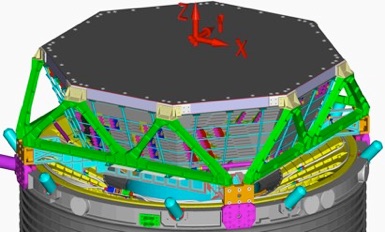
The sources of charged and neutral cosmic rays are believed to be supernovae and their remnants, pulsars, stellar winds and binary systems. Cosmic radiation is dominated by protons. To measure positron spectra with high accuracy a very good proton-positron separation is required. The proton rejection has to reach a level of 1,000,000 up to particle energies of 300 GeV. In AMS-02 this will be achieved by a combination of an electromagnetic calorimeter, proton rejection 1,000 - 10,000, and a transition radiation detector (TRD) which reaches a proton rejection of 100 to more than 10,000 depending on the particle momentum.
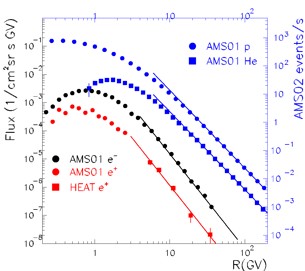
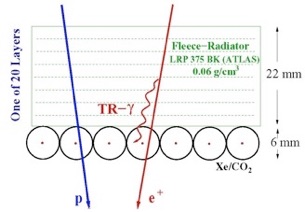
Transition Radiation (TR) photons are soft X-rays peaking around 5 keV. With a low probability on the order of TR photons are generated when a boundary with a change in the dielectric constant is crossed by a charged particle (energy E, mass m) with a relativistic Lorentz factor above a threshold of around 500 and are emitted colinear with the primary particle. Thus primary protons up to 300 GeV can be distinguished from positrons of the same momentum in a suitable detector recording both the direct ionization signal from the primary particle and the TR photons after a radiator with a large number of TR boundary crossings.
The AMS TRD consists of 20 layers of straw modules and irregular fleece radiator with a total of 328 modules (16 straws each). The housing consists of a conically shaped octagon structure made out of CFC-Al-honeycomb material and is closed by a lower and upper honeycomb plate. The gas is a 80:20 Xe/CO2 mixture. The straw modules are operated in proportional mode at a gas-gain of 3000. The signals are readout by VA chips. The detector was built at RWTH Aachen, with contributions from MIT (gas system), INFN Rome (slow-control), and KIT Karlsruhe (DAQ).
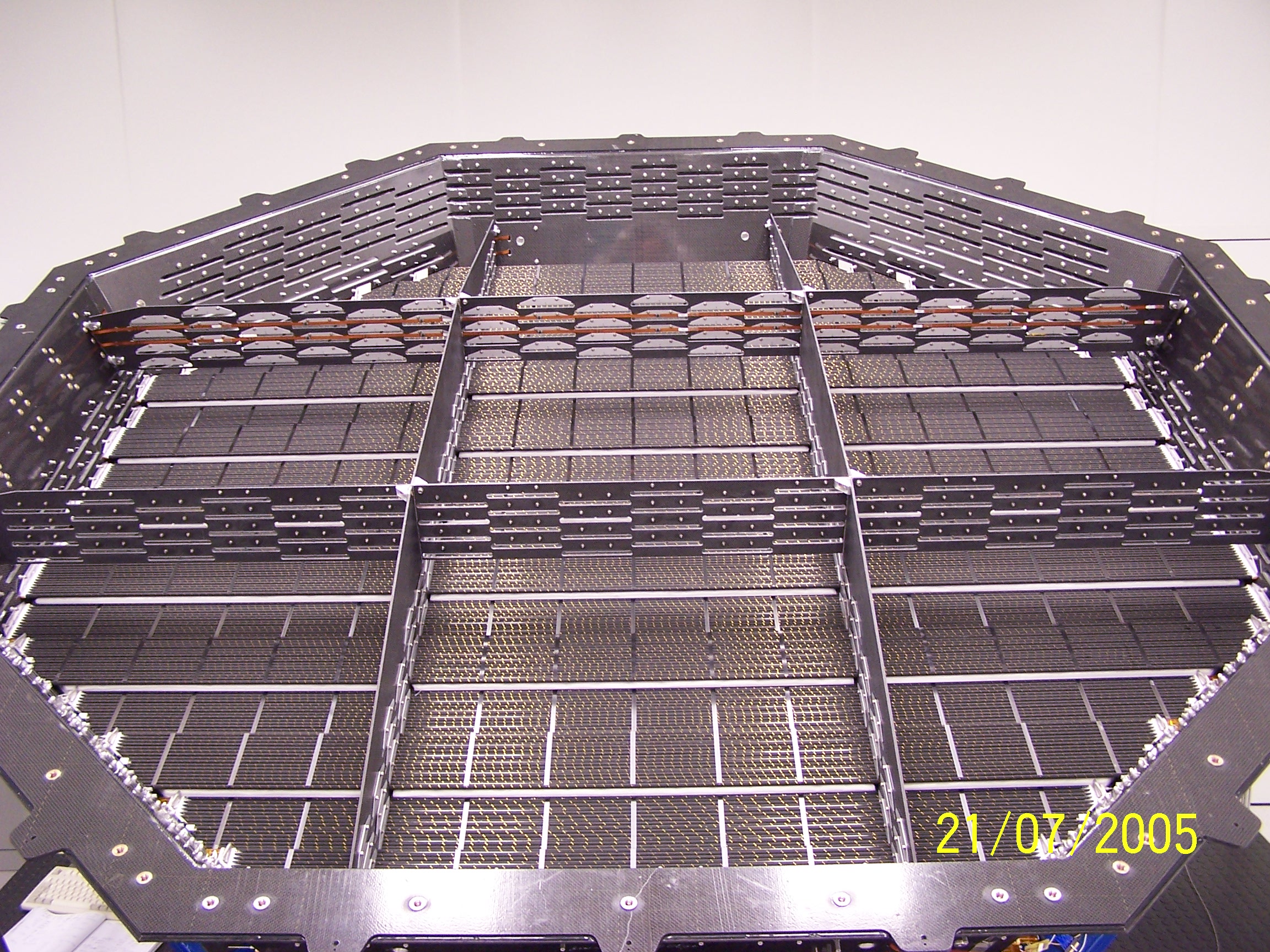
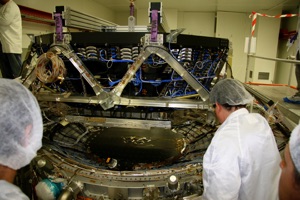
The performance of the TRD was optimized by careful adjustment of the operational parameters. It has now been operating continuously on the ISS for more than ten years. Its proton rejection in the rigidity range from 10 to 100 GeV greatly exceeds 10,000:

Bibliography
- Ph. v. Doetinchem and others, "Performance of the AMS-02 Transition Radiation Detector", Nucl. Instrum. Meth. (2006) A558, 526-535 (astro-ph/0608641).